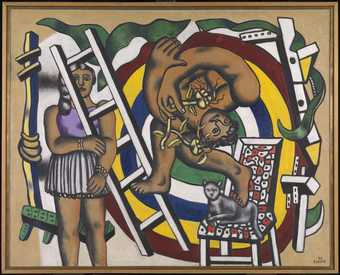
Fernand Léger, The Acrobat and his Partner 1948. Tate. © ADAGP, Paris and DACS, London 2023.
Modern Times
12 rooms in Media Networks
Feel the excitement and anxiety generated by the modern city
In the early twentieth century, technology played an increasing role in how people worked, communicated and relaxed, and also influenced how artists represented a fast-changing world.
Artists wanted to capture the speed of modern transportation, the rapid pace of industrialisation and the transformative power of technology. They turned their attention to distinctly urban subjects such as factories and street scenes. The experience of modern leisure was another key theme, whether in busy cafés or at the circus and carnival. In these lively and sometimes riotous public spaces, social conventions were changing and people mixed and interacted in new ways.
Alongside these new subjects came new techniques to express the city’s dynamism in paint, sculpture and photography. Perspectives were fractured and multiplied, as artists tried to portray a world viewed by a restless, moving eye. Contemporary life was present even in abstract art as artists included words referring to communication and travel, and shapes evoking modern architecture and fashion.
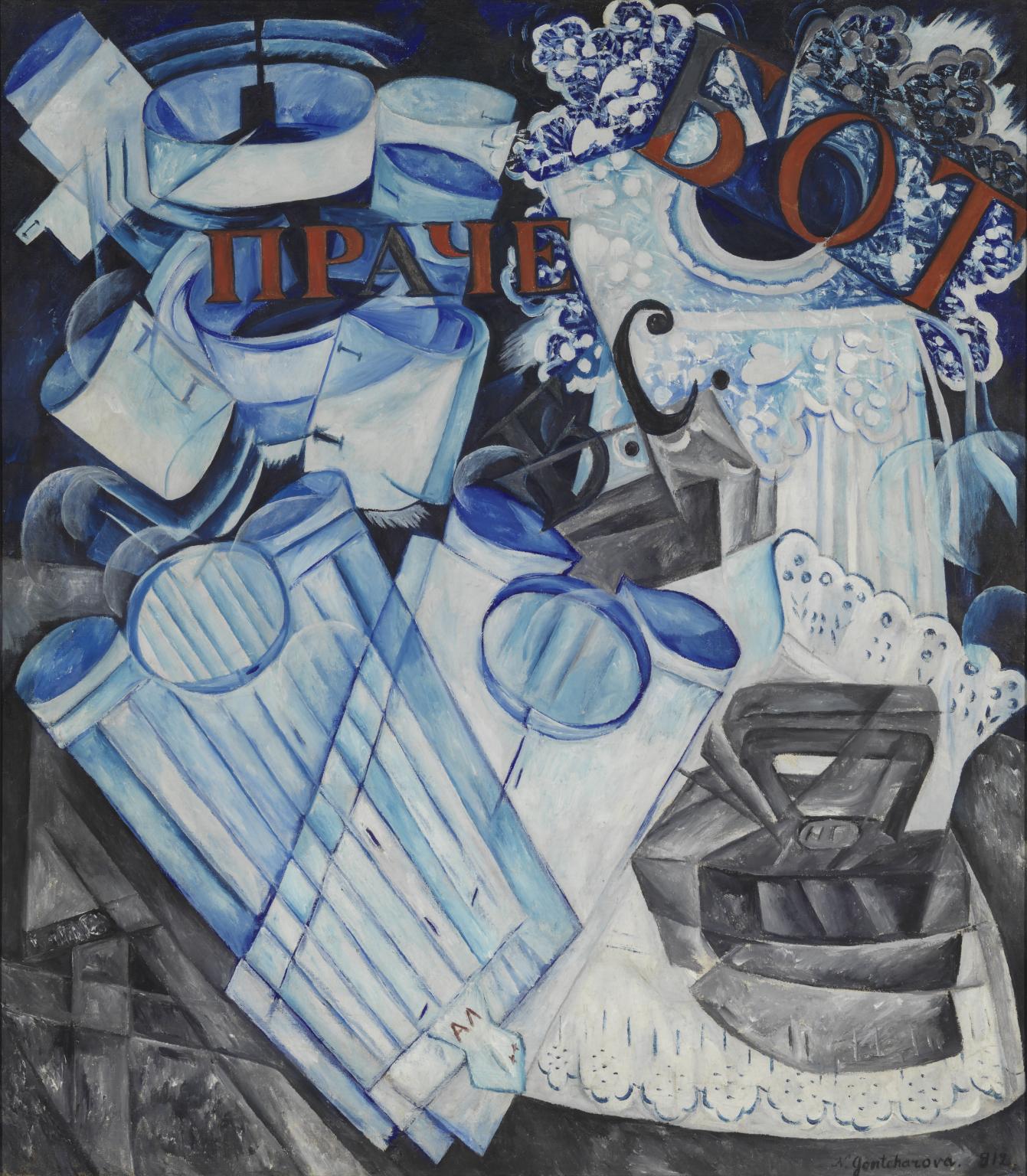
Natalia Goncharova, Linen 1913
The Russian inscriptions suggest a launderette sign: Prache is part of the word for laundry, b.s. is an abbreviation for ‘white wash’, and BOT possibly part of the word rabota meaning ‘work’. The iron bears a monogram with the artist’s initials. This painting conveys the bustle of a commercial laundry but can also be seen as a coded commentary on Goncharova’s relationship with her partner, fellow-artist Michel Larionov. The two sides of the work are divided between male (shirts, collars and cuffs) and female (lace, blouses, aprons) items of laundry.
Gallery label, December 2016
1/21
artworks in Modern Times
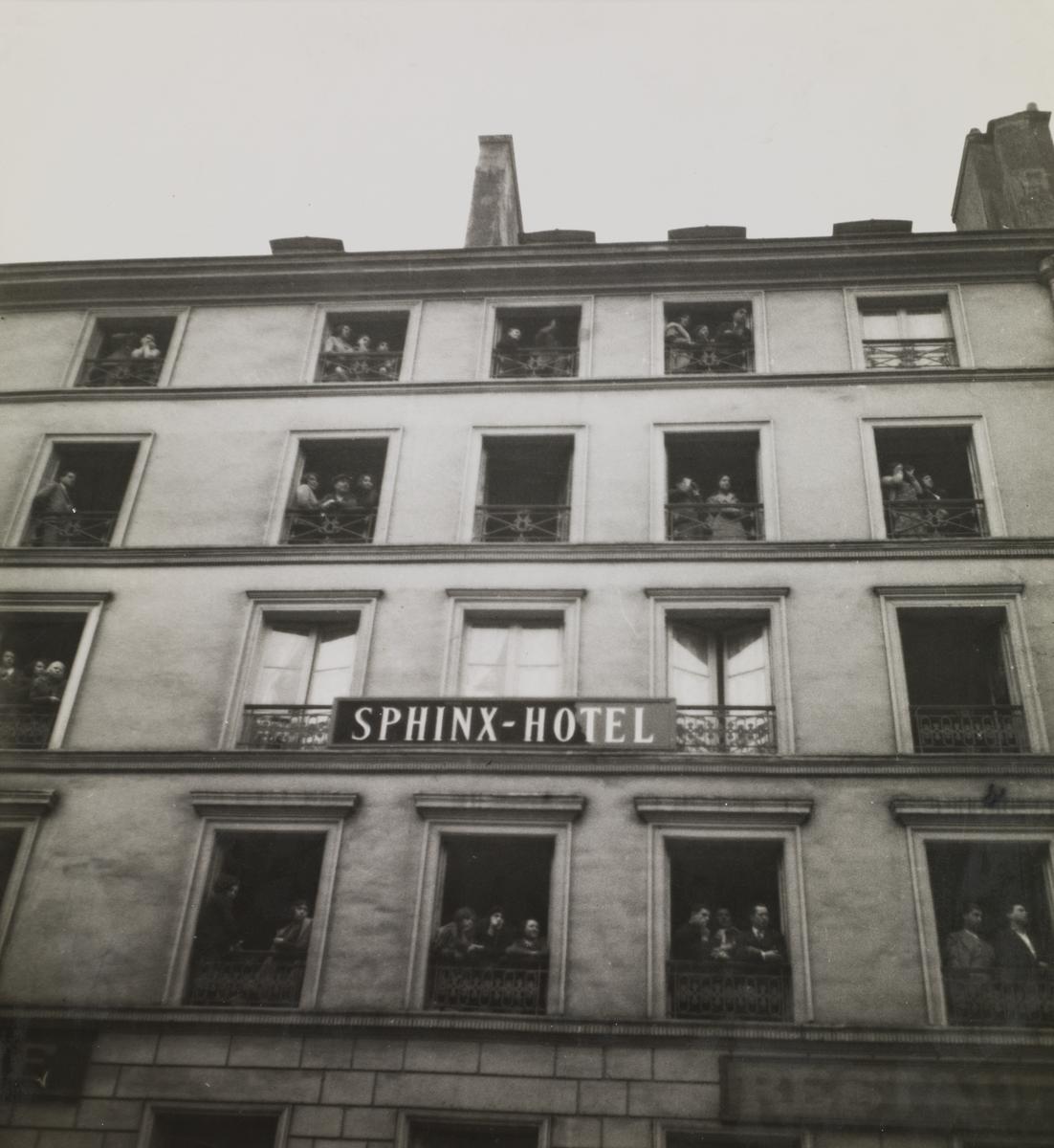
Dora Maar, Untitled (Sphinx-Hôtel) 1935
2/21
artworks in Modern Times
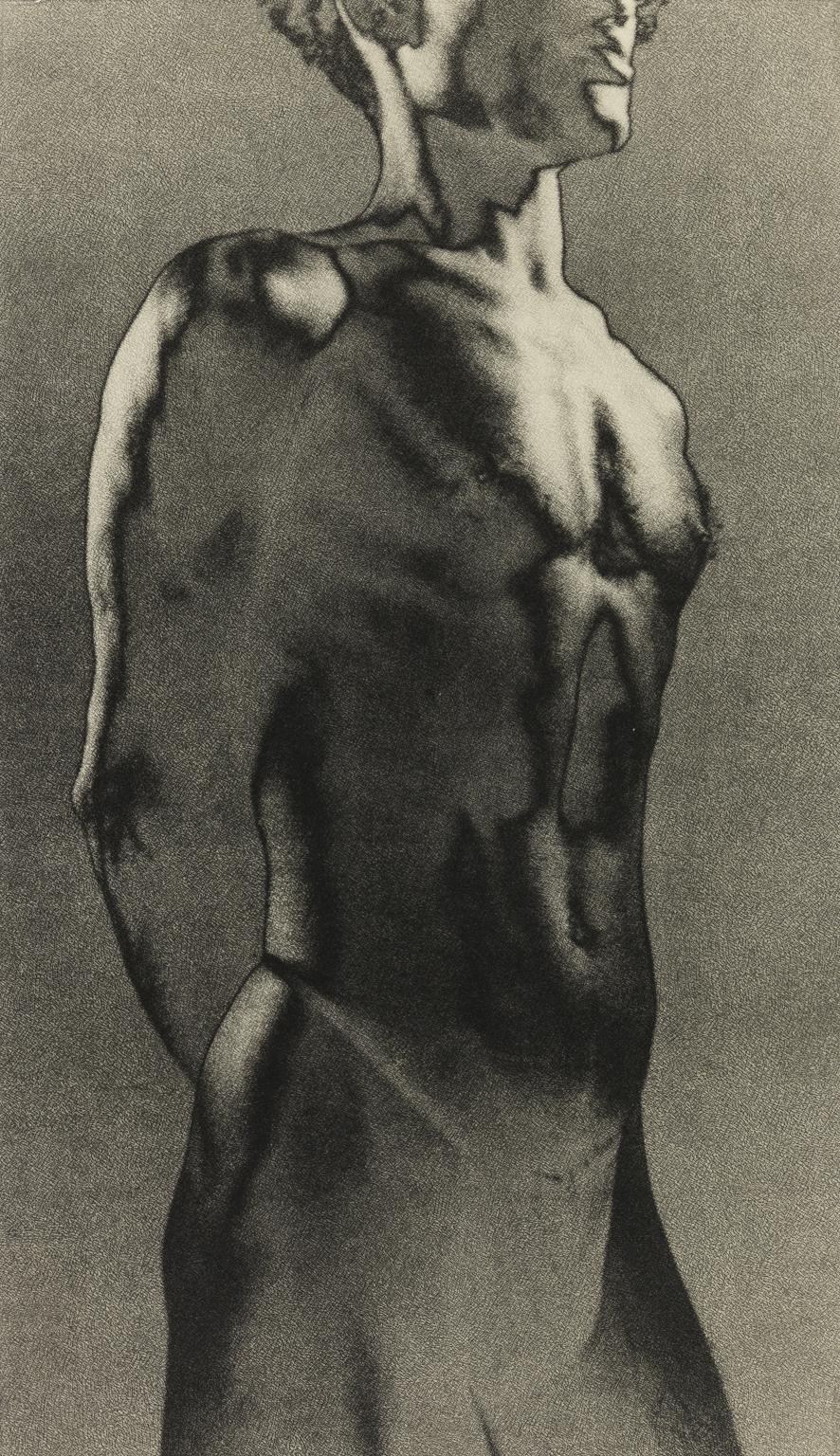
Lionel Wendt, Untitled after 1934
This photograph is a vintage print by Sri Lankan photographer Lionel Wendt. It presents a solarised study of the male form, printed in an unusually large format. The figure is cropped at mid-thigh and mid-head, indicating that it is less a portrait than a formal figure study. Wendt produced several series of formal figurative studies, largely male and some female. His interest in Ceylonese dance and music led him to document Kandian dancers as well as scenes of everyday life, and some of the subjects are known to have become regular models. His attitude towards the human form was informed by classical Greco-Roman poses and statuary, the figures selected for their defined musculature and idealised bodies. In photographs set outdoors they are combined with local references, while in more intimate studio images the subjects are in staged and formal poses, often with selected props.
3/21
artworks in Modern Times
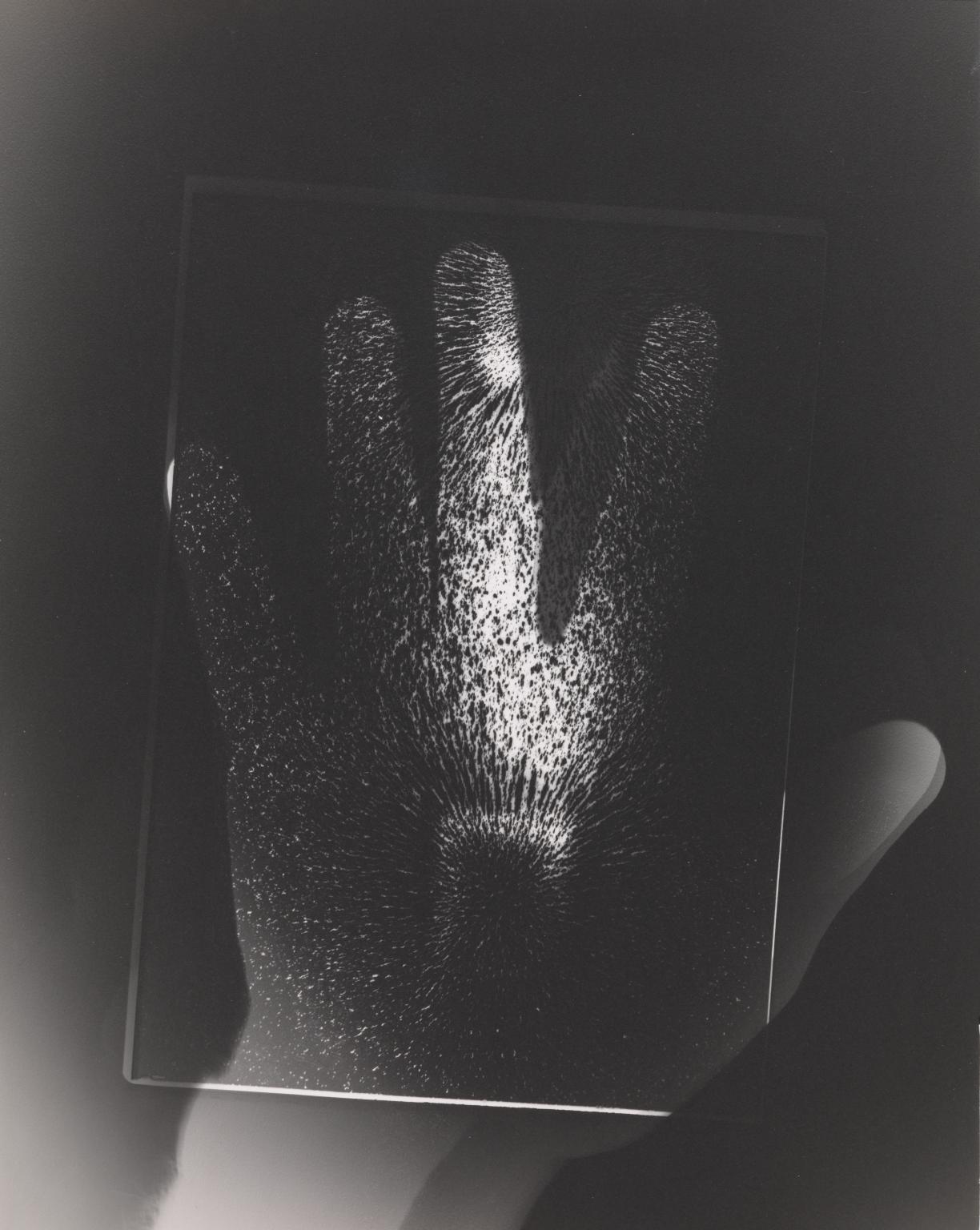
György Kepes, Hand and Magnet Photogram c.1939–40
This is one of a large group of photograms and studies in modernist photography in Tate’s collection by the Hungarian-born photographer, painter, designer, teacher and writer, Gyorgy Kepes (see Tate P80532–P80568, T13973–T13975). They date from 1938 to the early 1940s and were made in the United States, where Kepes had emigrated in 1937. Kepes made his earliest photograms in Budapest, taking nature as his starting point, directly recording the process without a camera onto photosensitized surfaces. In the late 1920s Kepes joined the Berlin studio of the Hungarian artist and modernist photographer László Moholy-Nagy (1895–1946). Moholy-Nagy had been a teacher at the Bauhaus School in Germany and was one of the principals in promoting the values of the Bauhaus movement, as well as a pioneer who experimented with a multitude of materials and techniques. Kepes was introduced to the ‘new vision’ provided by the possibilities of modern art techniques while collaborating alongside Moholy-Nagy. He began to experiment with photograms himself – photographic prints made in the darkroom by placing objects directly onto light sensitive paper and exposing the paper to light. Later, he made prints he called ‘photo-drawings’, in which he applied paint to a glass plate that he then used as though it were a negative. Only a few of Kepes’s works from this earlier period survived the artist’s many moves in the 1930s and the Second World War.
4/21
artworks in Modern Times
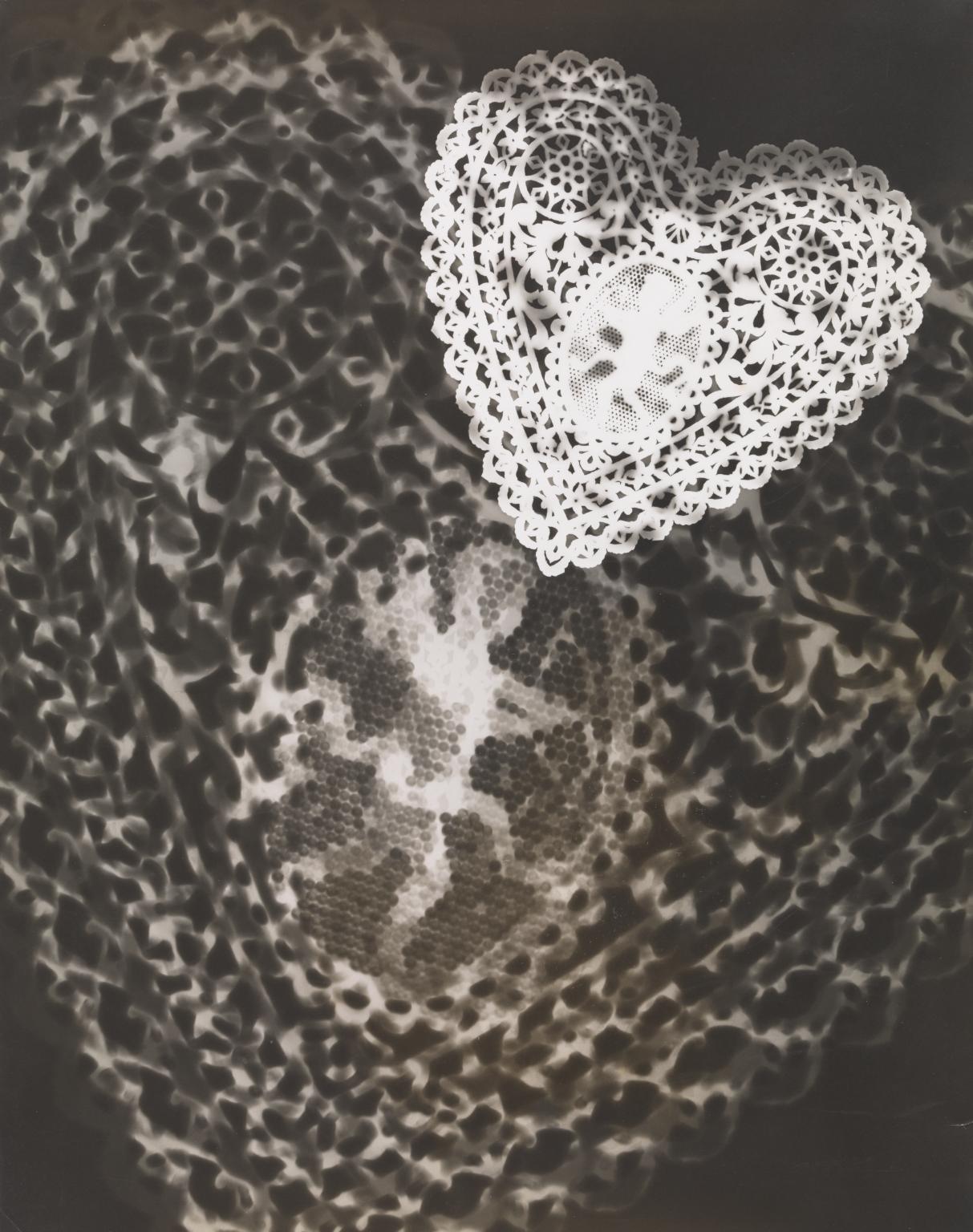
György Kepes, Lace Heart Doilies c.1939–40
This is one of a large group of photograms and studies in modernist photography in Tate’s collection by the Hungarian-born photographer, painter, designer, teacher and writer, Gyorgy Kepes (see Tate P80532–P80568, T13973–T13975). They date from 1938 to the early 1940s and were made in the United States, where Kepes had emigrated in 1937. Kepes made his earliest photograms in Budapest, taking nature as his starting point, directly recording the process without a camera onto photosensitized surfaces. In the late 1920s Kepes joined the Berlin studio of the Hungarian artist and modernist photographer László Moholy-Nagy (1895–1946). Moholy-Nagy had been a teacher at the Bauhaus School in Germany and was one of the principals in promoting the values of the Bauhaus movement, as well as a pioneer who experimented with a multitude of materials and techniques. Kepes was introduced to the ‘new vision’ provided by the possibilities of modern art techniques while collaborating alongside Moholy-Nagy. He began to experiment with photograms himself – photographic prints made in the darkroom by placing objects directly onto light sensitive paper and exposing the paper to light. Later, he made prints he called ‘photo-drawings’, in which he applied paint to a glass plate that he then used as though it were a negative. Only a few of Kepes’s works from this earlier period survived the artist’s many moves in the 1930s and the Second World War.
5/21
artworks in Modern Times
Sorry, no image available
Iosif Gerasimovich, The Mullah’s Third Wife 1928
Soviet cinema flourished during the 1920s, as Lenin’s New Economic Policy (NEP) replaced the military communism of the Russian Civil War. Cinema poster artists such as Gerasimovich often blended geometric forms with the newly developed technique of photomontage. The Mullah’s Third Wife addresses the struggle for the emancipation of women amongst the Soviet Muslim population. Gerasimovich, working for the state-sponsored production company Sovkino, presents the film by employing the star aesthetics of contemporary western cinematography, which had flooded the Soviet Union during the NEP period.
Gallery label, January 2022
6/21
artworks in Modern Times
Sorry, no image available
Georgii Stenberg, Vladimir Stenberg, An Ordinary Story 1927
The creative duo Vladimir and Georgii Stenberg are considered to be the most innovative and important poster artists of 1920s Soviet cinema. With backgrounds in abstract painting and construction-making, they created stage sets and costumes for the avant-garde theatre and pioneered photomontage in cinema posters. In 1928 they stated, ‘We have complete freedom in handling the material, without observing any proportions between objects and figures, and between their individual details. In short, we use everything that can captivate any passer-by in his tracks’.
Gallery label, January 2022
7/21
artworks in Modern Times
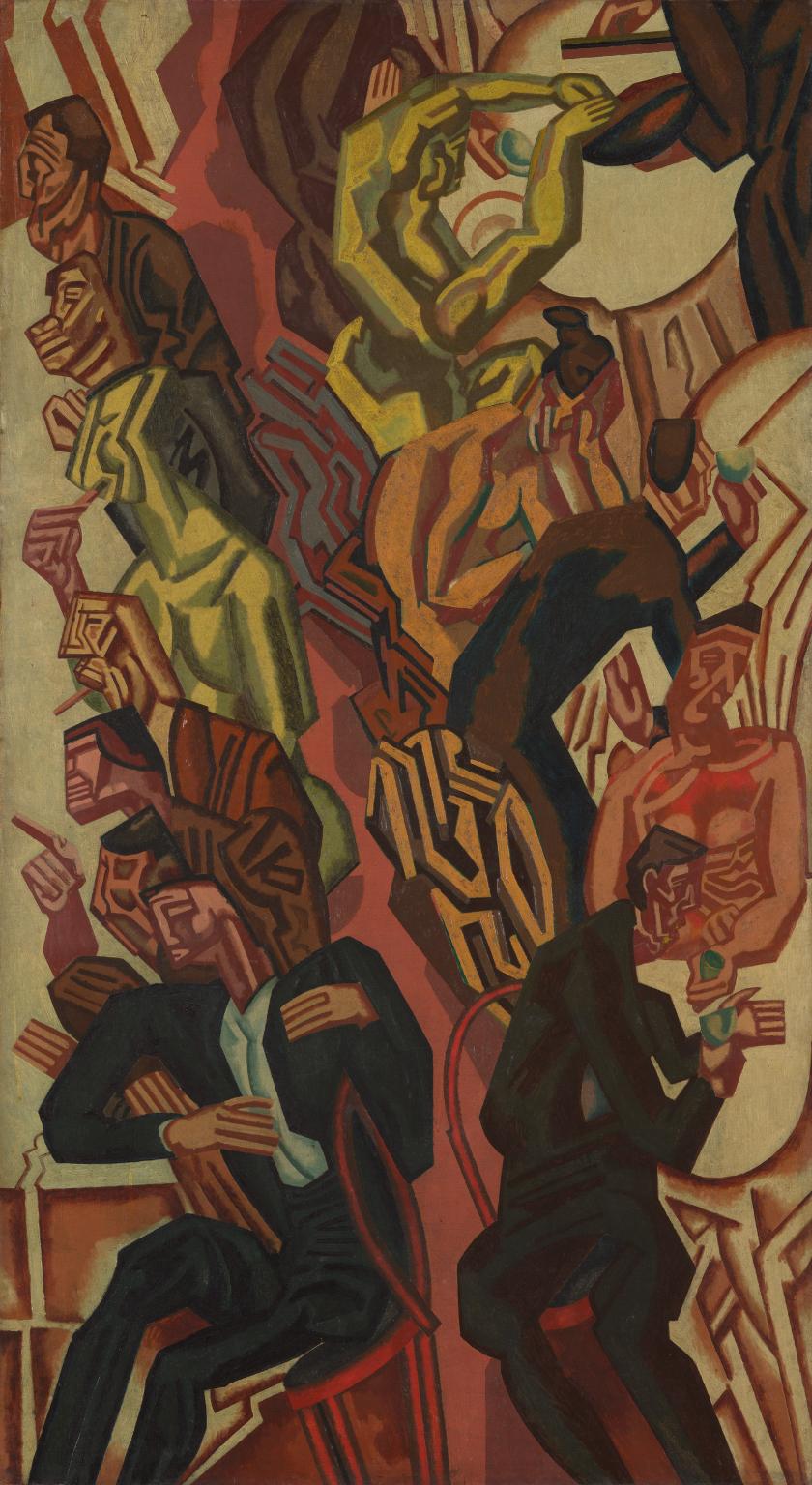
William Roberts, The Diners 1919
This is one of three decorative ‘panels’ commissioned for the ‘Restaurant de la Tour Eiffel’ in London. All three panels hung in the first floor lobby leading to two private dining rooms, one of which was known as the ‘Vorticist Room’, named after the group of avant garde artists engaged in expressing the dynamic modern world who congregated there.
Gallery label, February 2016
8/21
artworks in Modern Times
Sorry, no image available
Diego Rivera, Still Life 1916
The objects depicted in this painting include a flask, a wine glass, a soda dispenser, a book and a tin of milk on a table. He also included his signature and the date of the painting on the milk label (‘DR/anno 16’). Rivera applied paint in different ways to create a variety of textures in the work. As a young painter in Paris, Rivera embraced cubism, a way of showing different viewpoints in a single painting. In the 1920s, he would go on make large mural paintings. He said he had not abandoned cubism but was ‘following the natural evolution’ of the style.
Gallery label, September 2019
9/21
artworks in Modern Times
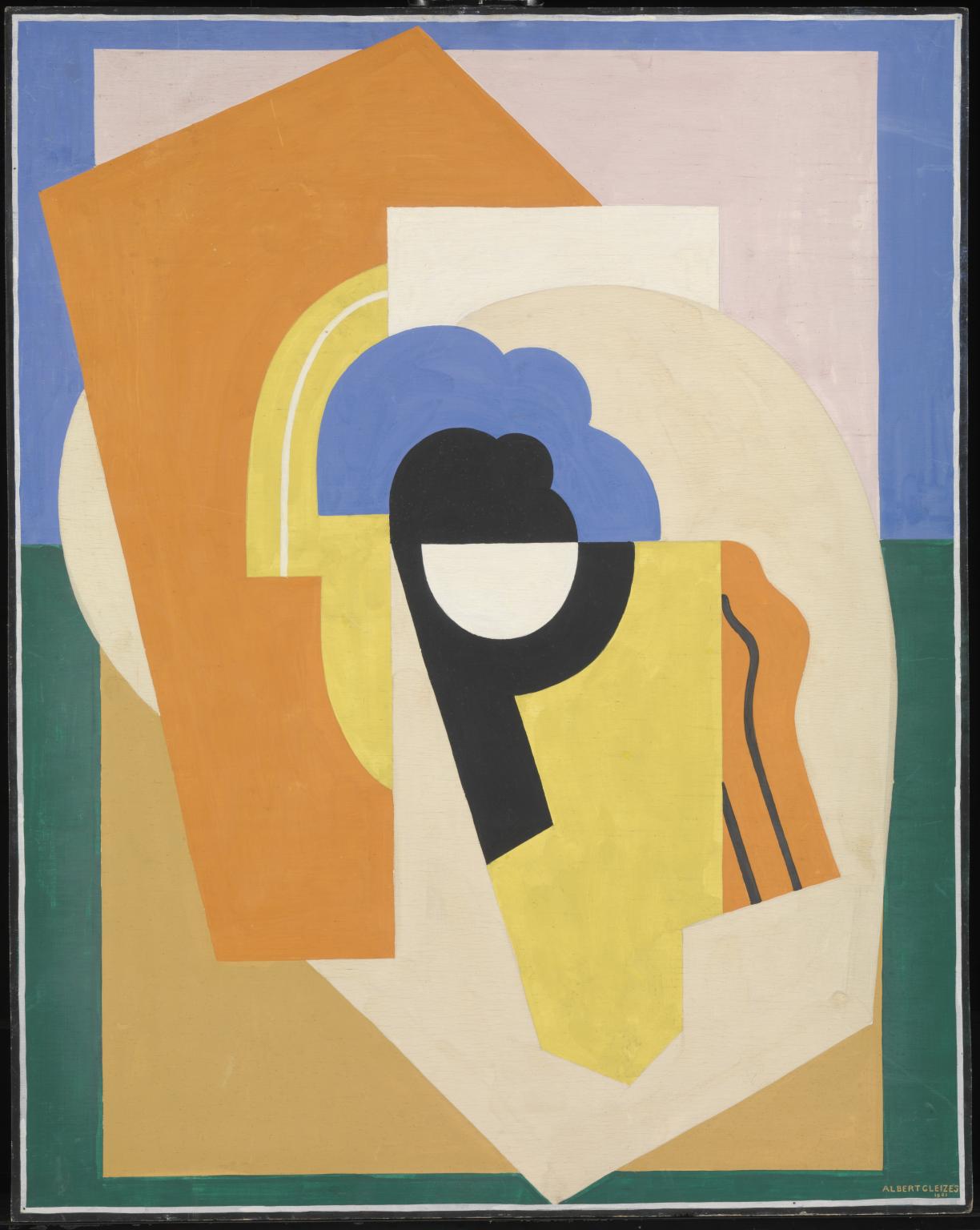
Albert Gleizes, Painting 1921
Gleizes’s abstract paintings often keep strong links with subject matter that inspired them. Here the image may be based on a female head, possibly that of the artist’s wife. Gleizes was a pacifist but was conscripted into the French army in the First World War. Deeply affected by this experience, he became gravely concerned with the future of society. He thought artists could help create a better world, not just by making beautiful things but by offering new ways of looking.
Gallery label, January 2019
10/21
artworks in Modern Times
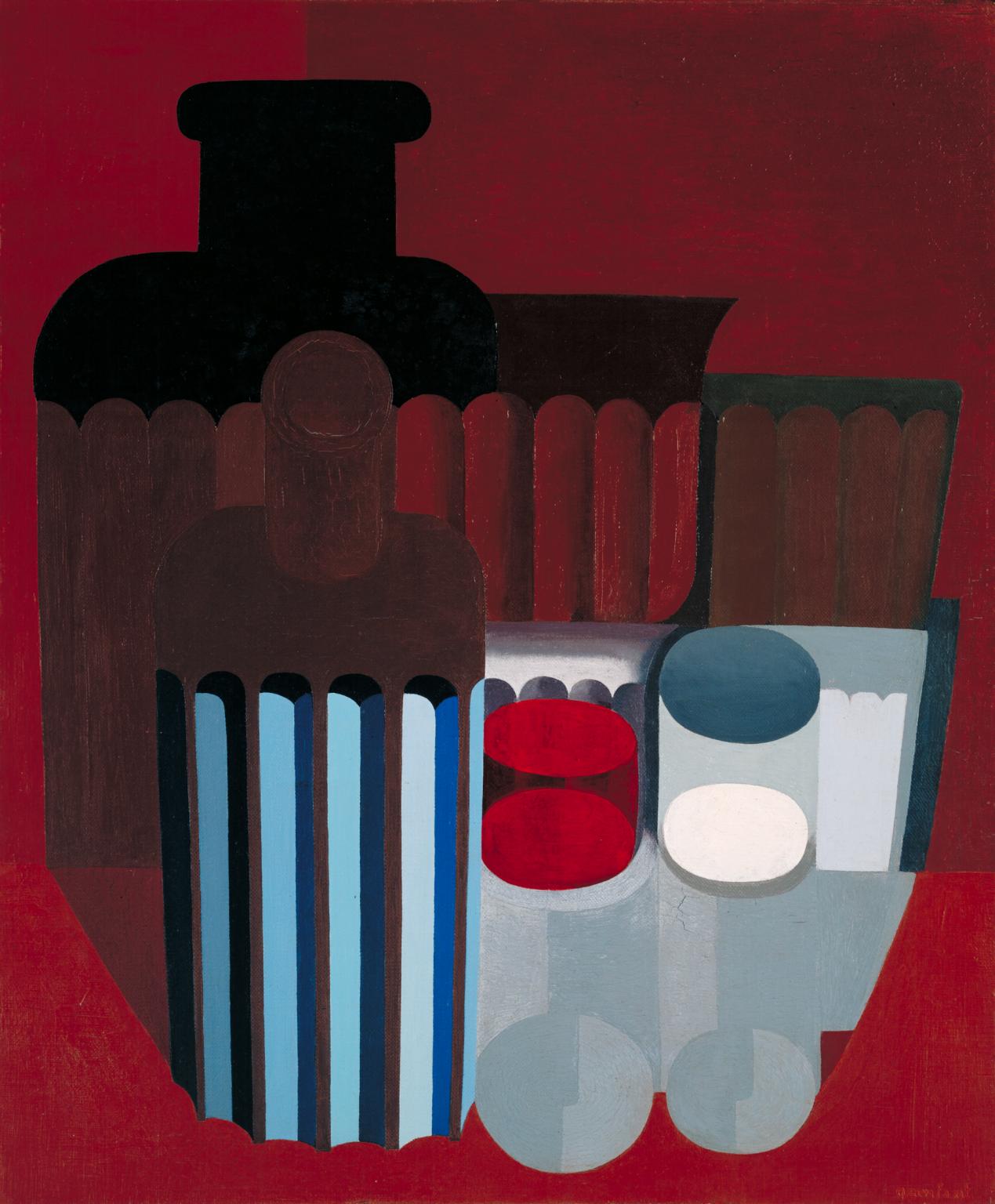
Amédée Ozenfant, Glasses and Bottles c.1922–6
Ozenfant applied the principles of classical proportion to everyday, modern subjects. The fluting of the bottles in this painting recalls classical columns, and is echoed in the glasses. The relationships between these objects creates harmony and unity. Ozenfant believed that finding order in the world around us was fundamental to the experience of beauty. He wrote, ‘the greatest human satisfaction is the feeling of collaboration or participation in this order’.
Gallery label, January 2019
11/21
artworks in Modern Times
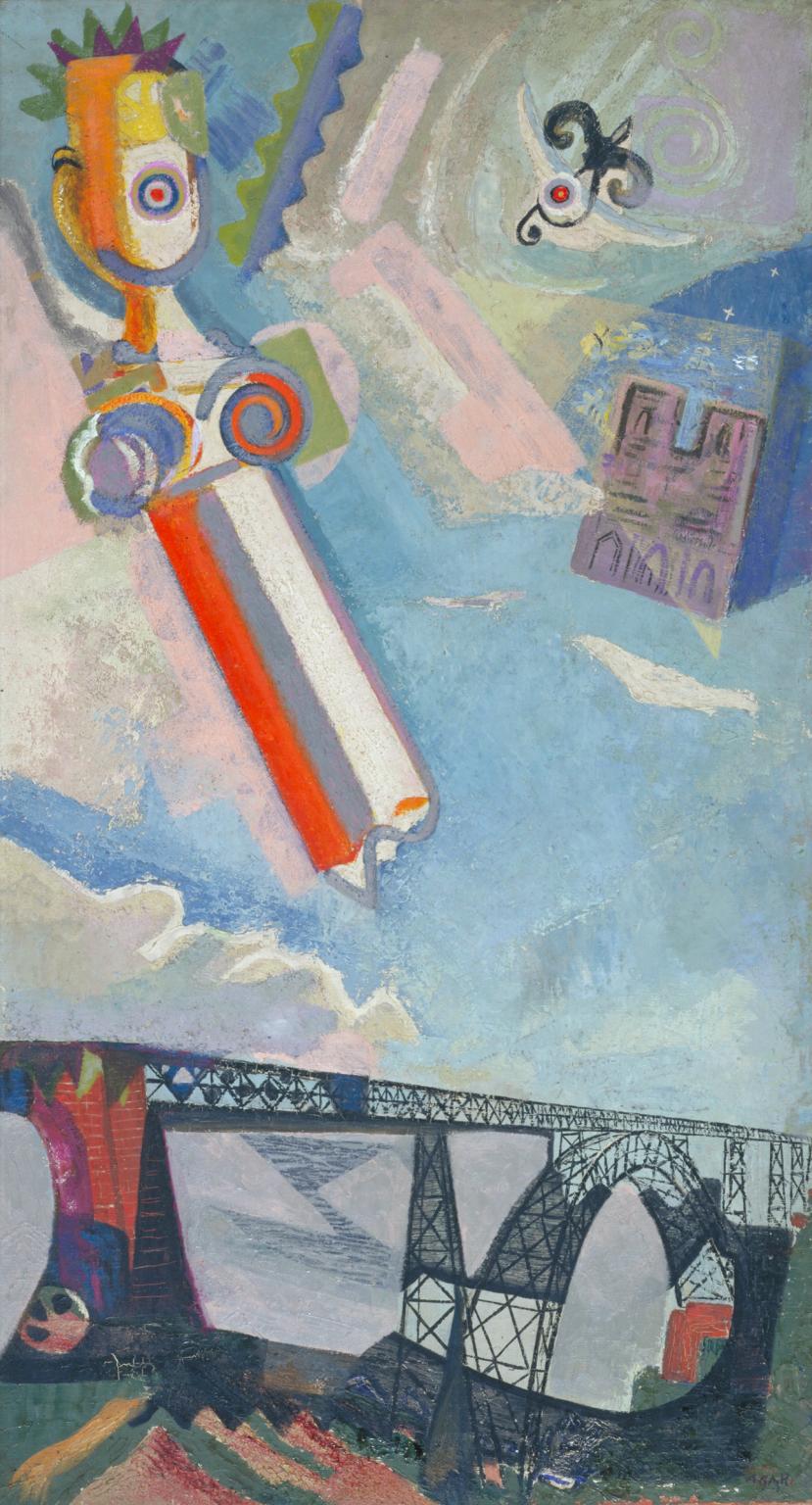
Eileen Agar, Three Symbols 1930
This painting includes structures from three eras: a Greek column, a Gothic cathedral (Notre Dame) and a modern bridge. Agar claimed that this flight of the imagination was the first work in which she began to move towards a more surrealist style. She and her future husband, the writer Joseph Bard, were living in Paris at this time. It was there that they met André Breton and Paul Eluard, who, she later recalled, were among the poets and painters giving the ‘kiss of life’ to surrealism, ‘that sleeping beauty troubled by nightmares’.
Gallery label, November 2016
12/21
artworks in Modern Times

Jean Hélion, Ile de France 1935
Hélion was one of the most prominent abstract artists in Paris in the 1930s. He later returned to a more representational style. Ile de France is mostly composed of flattened planes of colour but the forms in the foreground appear solid and three-dimensional. At the time, Hélion reflected: ‘The more I advance the more evident is the attraction of nature…the volumes want to become complete: objects, bodies.’
Gallery label, January 2019
13/21
artworks in Modern Times
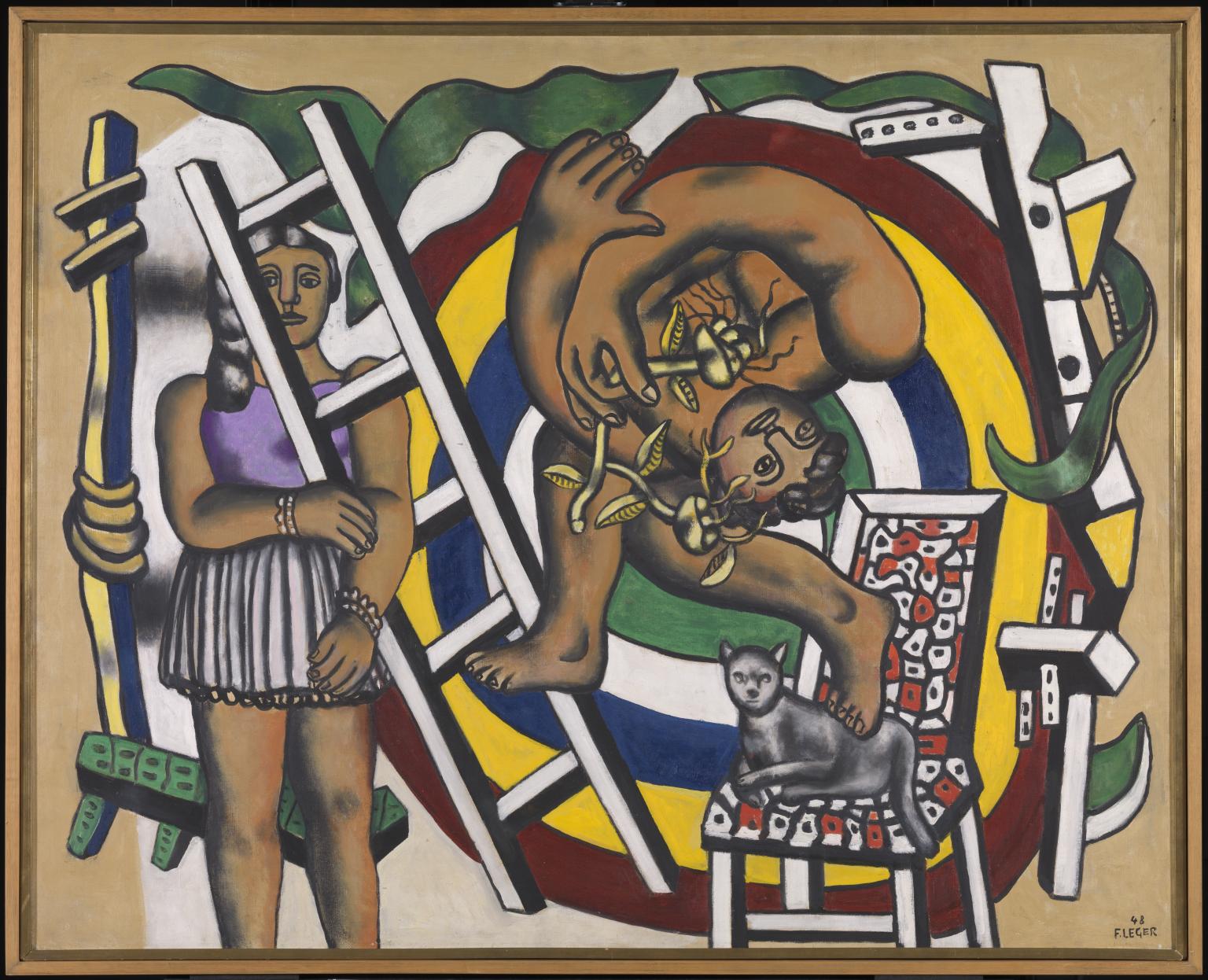
Fernand Léger, The Acrobat and his Partner 1948
Léger was closely involved with the Peace Movement at the height of the Cold War. Together with Picasso, he attended the Communist-sponsored Peace Congress in Poland in August 1948. The Acrobat and his Partner was completed only months before and captures the circus as a symbol of the energy of modern life and popular entertainment. He wrote of this painting: ‘I work less by reflection than by instinct’. He strove to balance ‘the dynamic and the static.’ Here the partner holding the ladder provides the stability for the energetic movement of the acrobat and his disc.
Gallery label, February 2016
14/21
artworks in Modern Times
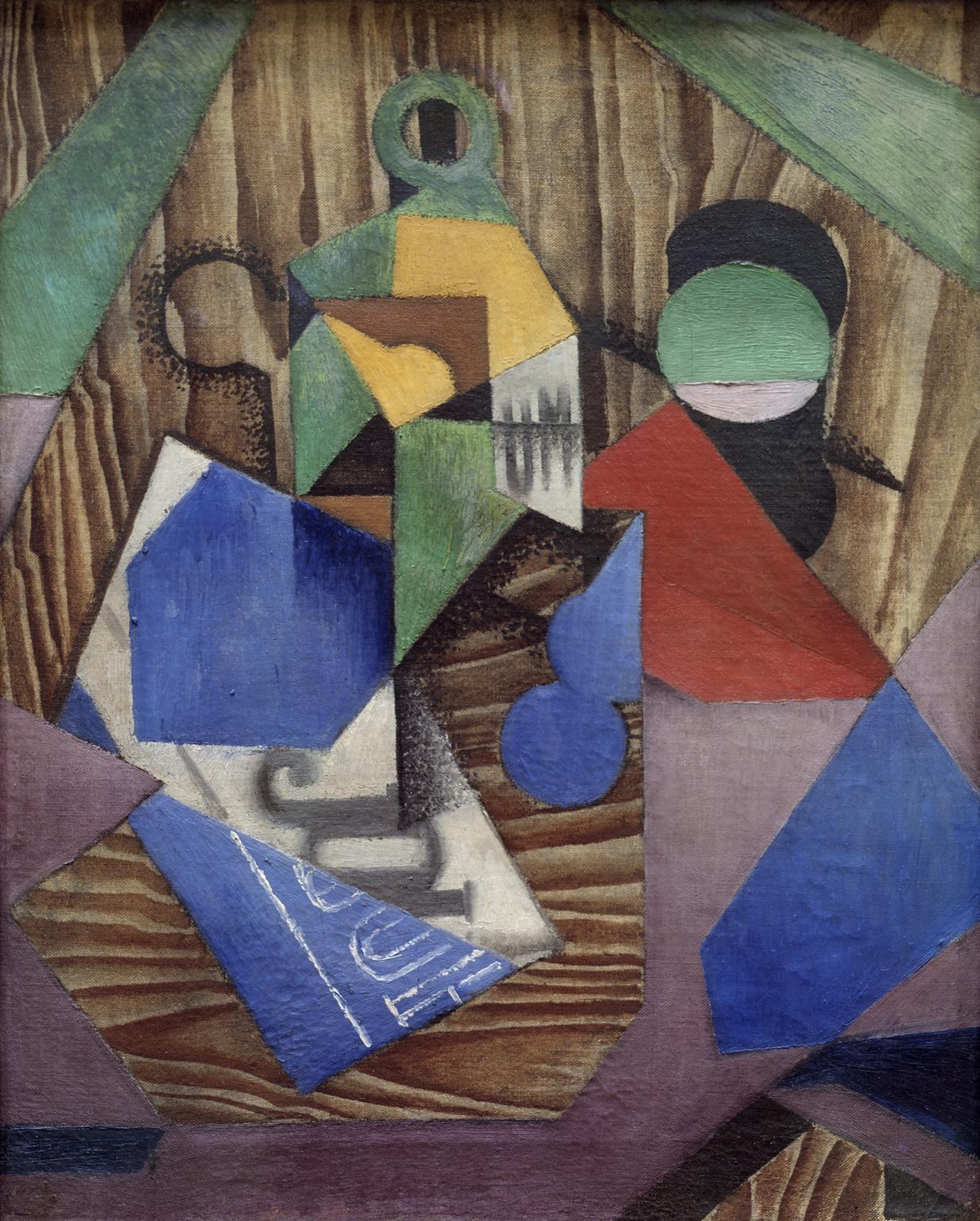
Juan Gris, Bottle of Rum and Newspaper 1913–14
Like many cubist works, Gris’s painting provides a revised experience of the everyday, whether in the studio or in a familiar café. Glimpsed letters confirm the positions of the two objects: UM for rum, JOUR (of ‘journal’) for the newspaper. A table is indicated by the false wood-graining, a house-painter’s skill much admired by the cubists because it is identifiably an illusion. Gris interweaves these fragmentary images of the familiar into a complex, carefully balanced structure.
Gallery label, August 2013
15/21
artworks in Modern Times
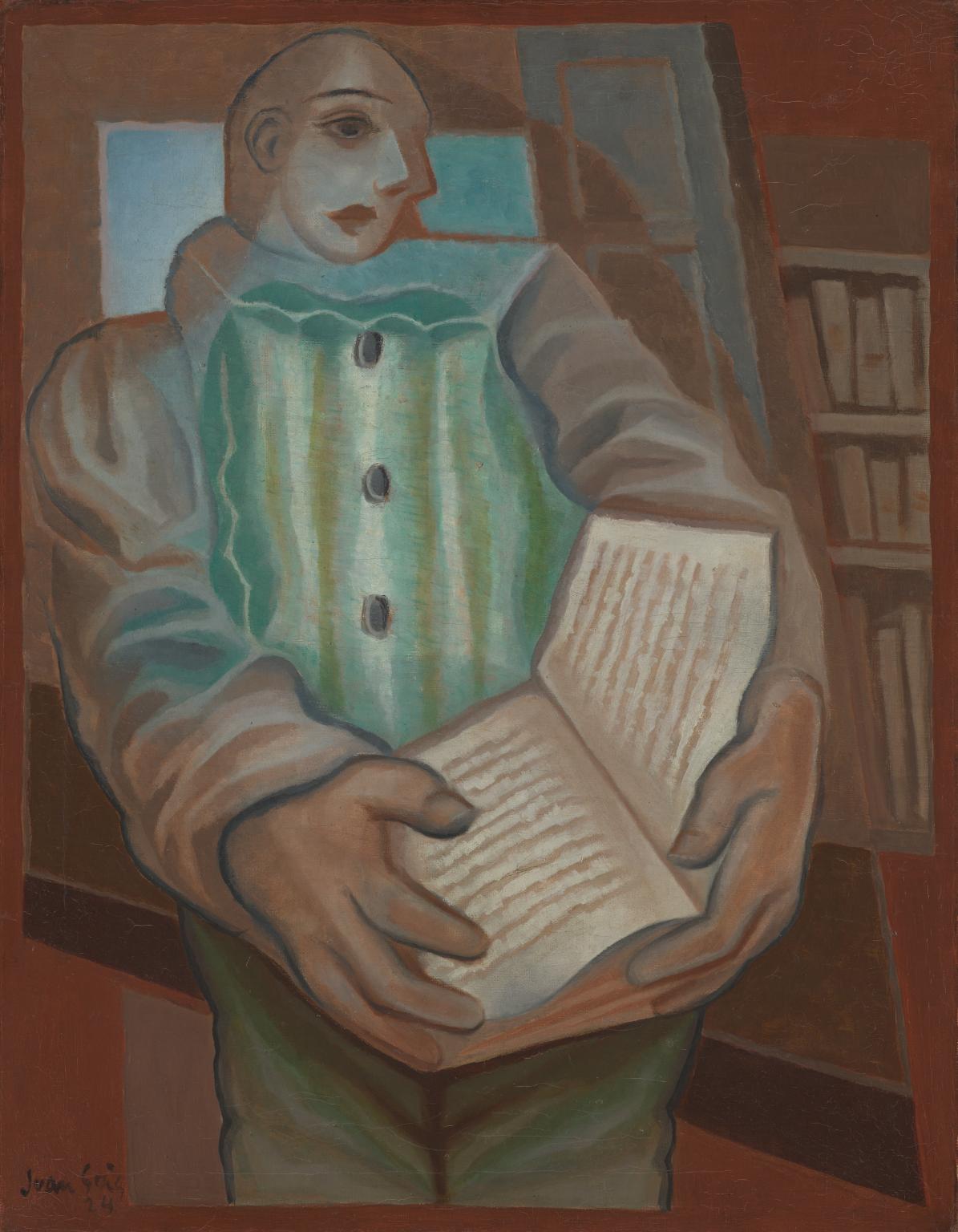
Juan Gris, Pierrot with Book 1924
Although this painting is resolutely figurative, it is strongly influenced by Cubism. Pierrot’s upper body is neatly framed within the architectural framework of the window behind him and the depiction of his face combines a frontal and sideways perspective. The greatly exaggerated hands contrast with the impression of daintiness given by Pierrot’s cupid-bow mouth and the soft pastel hues employed by Gris.
Gallery label, September 2004
16/21
artworks in Modern Times
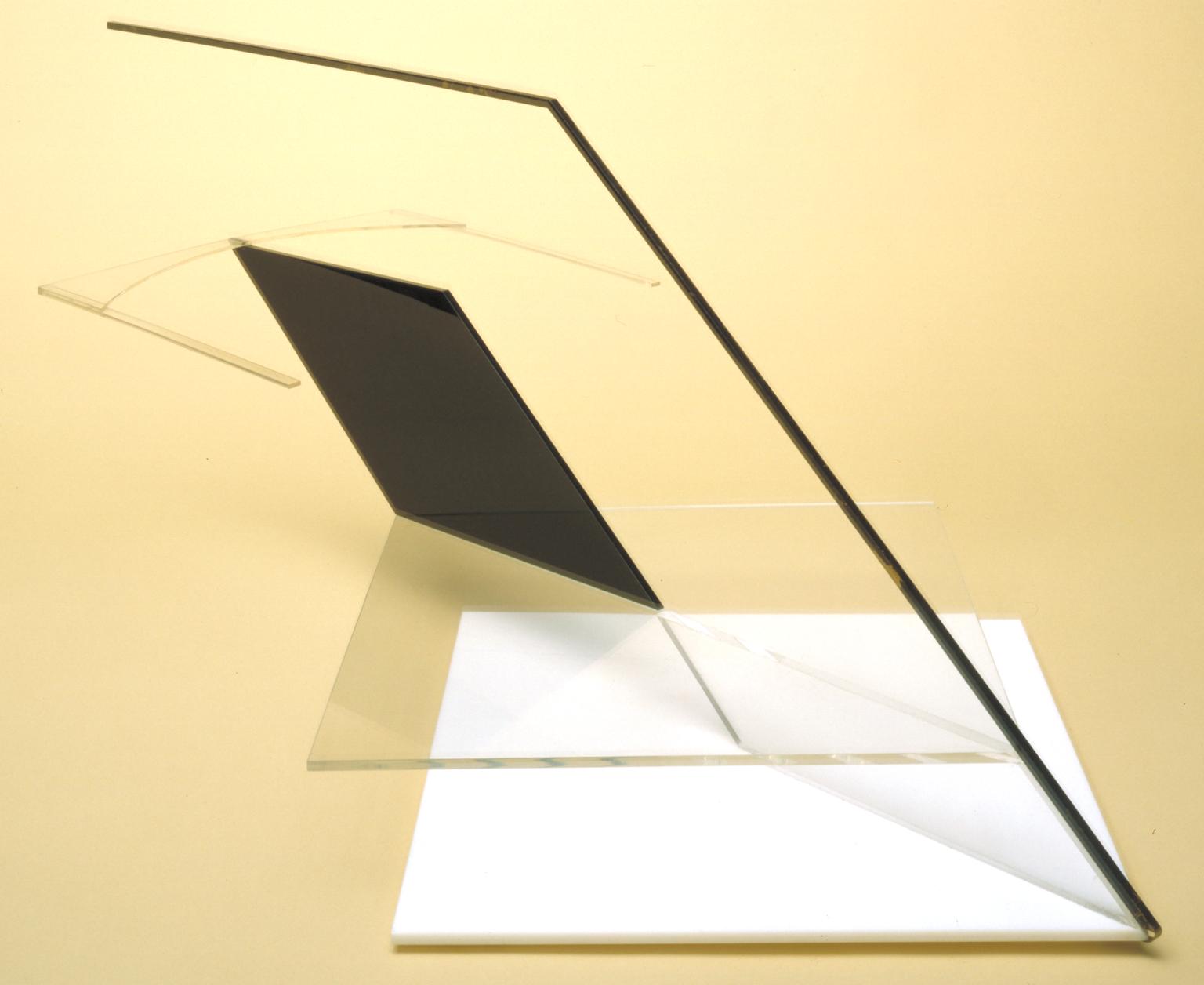
Naum Gabo, Monument for an Airport c.1932–48
Constructivist artist Naum Gabo explored ideas of public art while launching his career in post-revolutionary Russia. He envisaged most of his sculptural projects as public monuments. Fascinated by the idea of civil aviation since early 1920s, Gabo experimented with designs for flying machines, buildings with helipads and monumental projects such as this work. Gabo envisaged this sculpture as a large-scale sculpture for an airport booking-hall or an outdoor monument. Using state-of-the-art materials such as Perspex, marketed in the late 1930s, allowed him to realise his early ideas on a larger scale.
Gallery label, June 2022
17/21
artworks in Modern Times
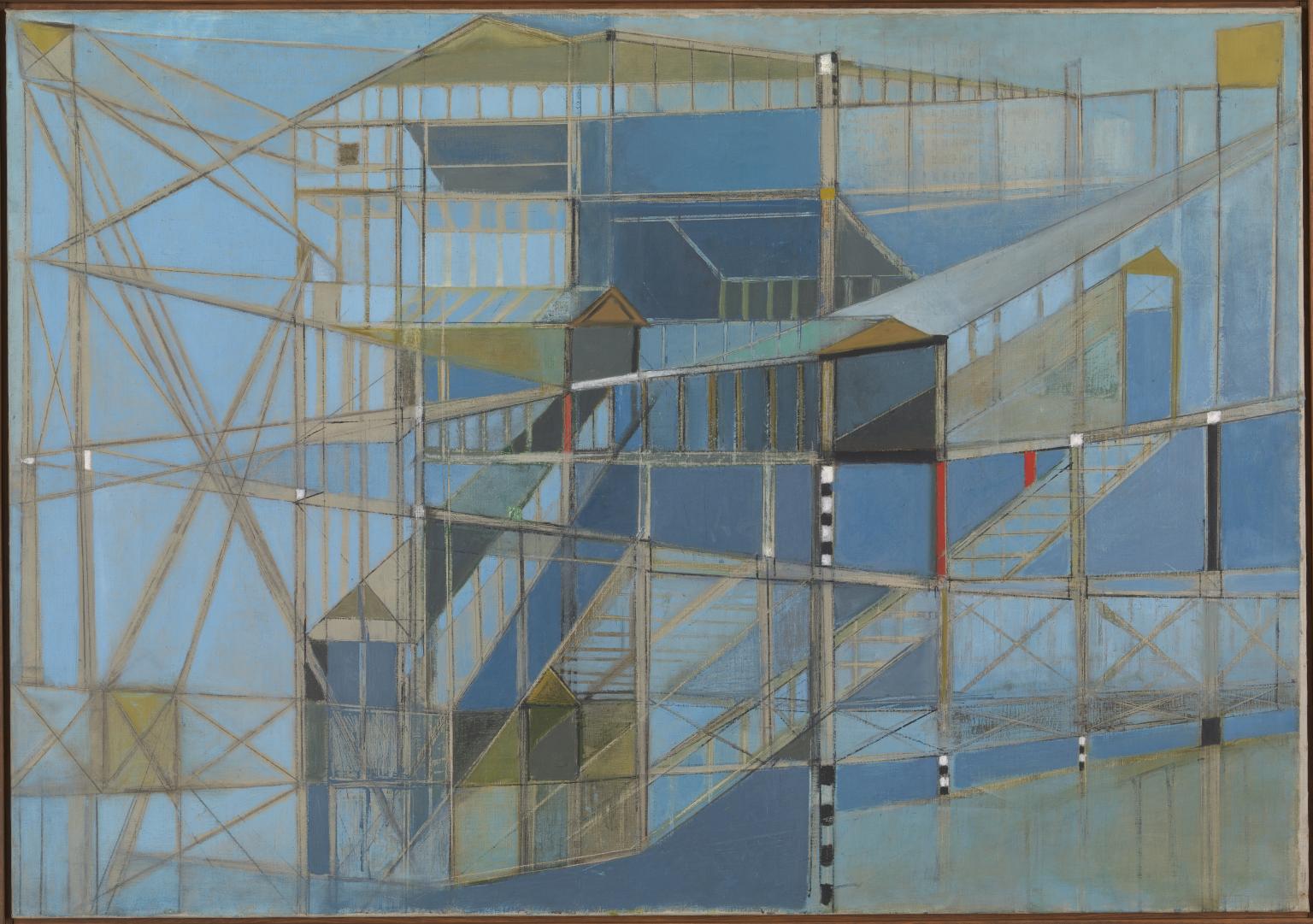
Hedda Sterne, NY, NY No. X 1948
NY, NY No. X is a prime example of Sterne’s works from the late 1940s. As the title suggests, her subject was the bridges and the elevated railways of New York City, which she abstracted into a mass of lines and planes. After arriving from war-torn Europe in 1941, Sterne became associated with the emerging generation of American painters. She was famously the only woman – alongside Jackson Pollock, Mark Rothko and others – in Nina Leen’s 1951 Life magazine photograph of ‘The Irascibles’, abstract artists objecting to the conservatism of the Metropolitan Museum of Art.
Gallery label, October 2016
18/21
artworks in Modern Times
Sorry, no image available
Osamu Shiihara, Title unknown 1930s
This photographic work by Japanese photographer Osamu Shiihara is an abstract photogram, made by casting light momentarily on objects placed on photographic paper. The result is an image crossed with white lines, some very sharp and others slightly blurred. There are also three circular shapes in the photograph, two black and one completely white with two concentric rings. Shiihara’s practice was defined by experimentation, and he used a variety of techniques including solarisation, double exposures, photograms and the combination of drawing and photography, which he called photo peinture.
19/21
artworks in Modern Times
Sorry, no image available
Osamu Shiihara, Shampoo c.1930
This photographic work by Japanese photographer Osamu Shiihara depicts a woman bending forwards, with her hair covering her face and filling the top left-hand corner of the image. The woman’s upper body is naked and her head is covered in soap suds. Through the technique of solarisation, the toning in the top part of the photograph has been reversed, meaning that the woman’s hair has a silvery sheen. Shiihara’s practice was defined by experimentation, and he used a variety of techniques including solarisation, double exposures, photograms and the combination of drawing and photography, which he called photo peinture.
20/21
artworks in Modern Times
Sorry, no image available
Kati Horna, Ascent to the Cathedral, Spanish Civil War, Barcelona, Spain 1937 1937
21/21
artworks in Modern Times
Art in this room





Sorry, no image available
Sorry, no image available

Sorry, no image available









Sorry, no image available
Sorry, no image available
Sorry, no image available
You've viewed 6/21 artworks
You've viewed 21/21 artworks
